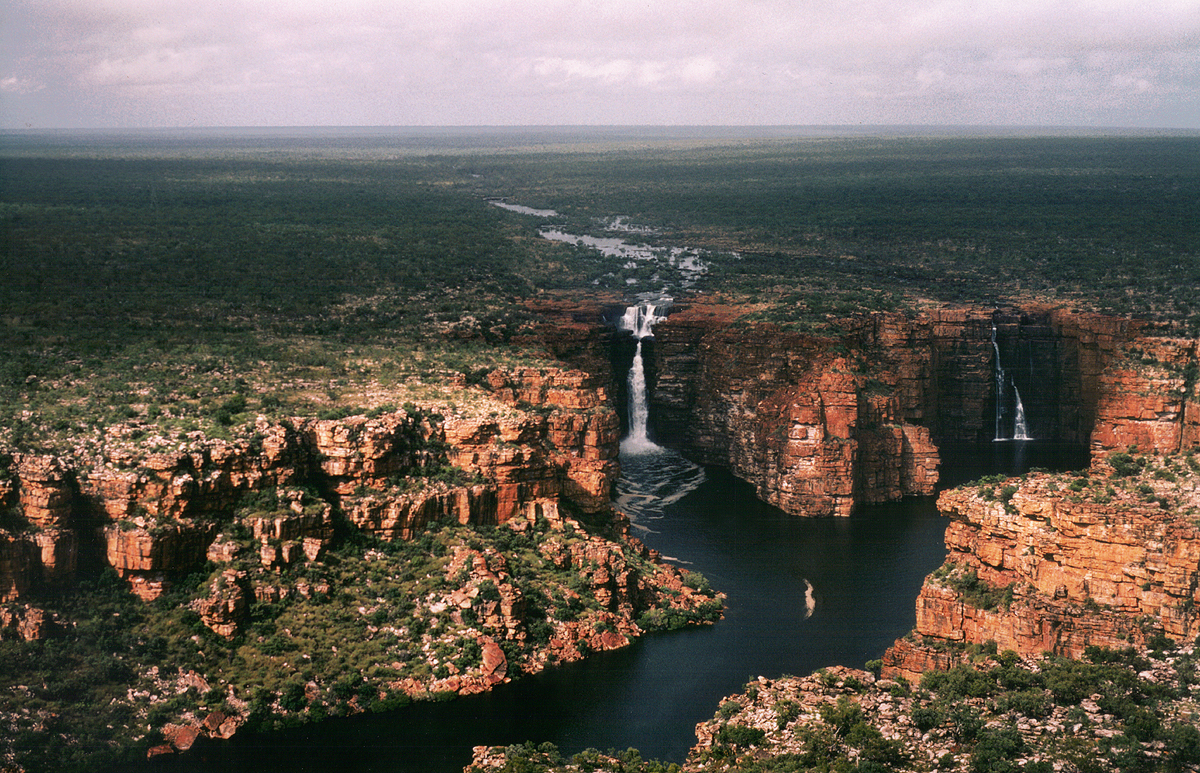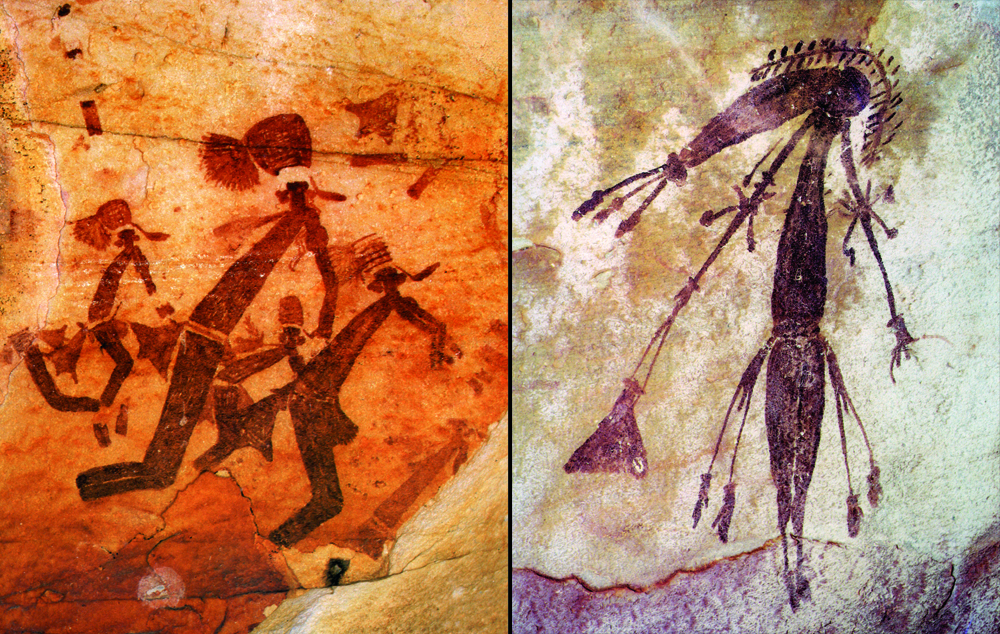


An article on perthnow.com - Researches date 'world's earliest rock art' in WA's Kimberley Region - reports on recent claims of rock art in Western Australia.

King George Falls, located in the Kimberley region of Western Australia. It is a dual drop waterfall at an elevation of 84 metres above sea level. Image: Hugh Brown/Bradshaw Foundation.
After a three year long project researchers have dated what may be the longest, most impressive rock art sequence anywhere in the world in the northwest Kimberley. In terms of age, this would address the current imbalance of attention focussed on the rock art of Europe.
Dating of Kimberley rock art in #Australia #Gwion #paintings #art https://t.co/WzM3K5M1vc pic.twitter.com/AFVGES9fN2
— Bradshaw Foundation (@BradshawFND) September 5, 2016
Rock paintings analysed in the Kimberley region of Western Australia. Image: Dr June Ross.
Lead author Dr June Ross, archaeologist from the University of New England, states that the new timeline for the beginning of rock art in Sulawesi in Indonesia around 39,000 years ago, together with evidence from excavations in the northwest Kimberley, show that humans with sophisticated artistic skills settled along the northern coastline as early as 36,000 years ago.
She believes that the Kimberley art is not only of great antiquity, but perhaps the oldest art is now submerged off the Kimberley coastline.
These views are based on a collaborative Australian Research Council project which documented, analysed and dated more than 200 art sites across the Kimberley region, with a focus on the Lawley and Mitchell river basins. Researchers from the University of New England, Macquarie University and the University of Wollongong and 20 Aboriginal community members from Kandiwal and Kalumburu collaborated for the project.

Gwion Gwion rock paintings of the Kimberley. Images: Bradshaw Foundation.
Using a light sensitive method called optically-stimulated luminescence, which was applied to the sand grains found within mud wasp nests, researchers were able to date when the artwork was created.
Geochronologist Kira Westaway from Macquarie University said mud wasps stuck to many of the art motifs and became fossilised over time, creating a type of time capsule; artists painted the images before the mud wasp constructed its nest.
Among the art discoveries was a perfectly preserved yam-like motif painted in mulberry coloured ochre on the ceiling of a deep cavern, which had a minimum age estimate of more than 16,000 years.
The researchers had hoped that some of the paintings analysed belonged to the rock art style known as Gwion Gwion (lower image), but unfortunately this was not the case.
Visit the Australia Rock Art Archive:
by Bradshaw Foundation
Monday 30 May 2022
by Bradshaw Foundation
Wednesday 19 January 2022
by Bradshaw Foundation
Thursday 06 January 2022
by Bradshaw Foundation
Monday 06 December 2021
by Bradshaw Foundation
Monday 29 November 2021
by Bradshaw Foundation
Monday 25 October 2021
by Bradshaw Foundation
Monday 12 July 2021
by Bradshaw Foundation
Monday 24 May 2021
by Bradshaw Foundation
Tuesday 20 April 2021
by Bradshaw Foundation
Thursday 01 April 2021
by Bradshaw Foundation
Tuesday 23 February 2021
by Bradshaw Foundation
Thursday 14 January 2021
by Bradshaw Foundation
Friday 18 December 2020
by Bradshaw Foundation
Sunday 06 December 2020
by Bradshaw Foundation
Thursday 26 November 2020
by Bradshaw Foundation
Wednesday 07 October 2020
by Bradshaw Foundation
Monday 30 May 2022
by Bradshaw Foundation
Wednesday 19 January 2022
by Bradshaw Foundation
Thursday 06 January 2022
by Bradshaw Foundation
Monday 06 December 2021
by Bradshaw Foundation
Monday 29 November 2021
by Bradshaw Foundation
Monday 25 October 2021
by Bradshaw Foundation
Monday 12 July 2021
by Bradshaw Foundation
Monday 24 May 2021
by Bradshaw Foundation
Tuesday 20 April 2021
by Bradshaw Foundation
Thursday 01 April 2021
by Bradshaw Foundation
Tuesday 23 February 2021
by Bradshaw Foundation
Thursday 14 January 2021
by Bradshaw Foundation
Friday 18 December 2020
by Bradshaw Foundation
Sunday 06 December 2020
by Bradshaw Foundation
Thursday 26 November 2020
by Bradshaw Foundation
Wednesday 07 October 2020
Friend of the Foundation











